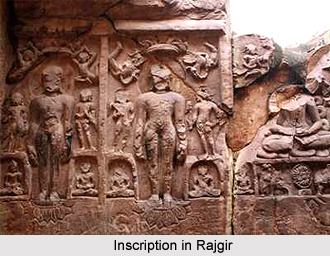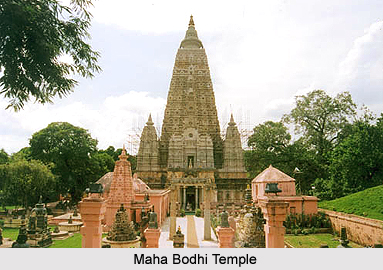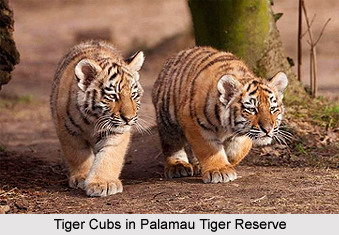 Tourism in Bihar comprises of both the nature tourism and pilgrimage tourism, that attracts Indians and the tourists outside India. Bihar, in North India, is full of tourist attractions. Being one of the oldest inhabited places in the world with history of three thousand years, it becomes the hub of Buddhist architecture. The state has rich culture and heritage which is depicted in the numerous ancient monuments that dots the place. Tourism in Bihar is an integral part of tourism in India. It is one of the most sacred places and offers a wide array of pilgrimage tourism. People from various religions like Hinduism, Jainism, Buddhism, Islam and Sikhism come here for spiritual enrichment. Forts and palaces in Bihar are rooted in deep historical significance. Wild life plays a vital part in boosting the tourism industry of Bihar. Ideally situated on the eastern Gangetic plain, it was the seat of several of the most famous ancient Indian dynasties and also the cradle of many religions.
Tourism in Bihar comprises of both the nature tourism and pilgrimage tourism, that attracts Indians and the tourists outside India. Bihar, in North India, is full of tourist attractions. Being one of the oldest inhabited places in the world with history of three thousand years, it becomes the hub of Buddhist architecture. The state has rich culture and heritage which is depicted in the numerous ancient monuments that dots the place. Tourism in Bihar is an integral part of tourism in India. It is one of the most sacred places and offers a wide array of pilgrimage tourism. People from various religions like Hinduism, Jainism, Buddhism, Islam and Sikhism come here for spiritual enrichment. Forts and palaces in Bihar are rooted in deep historical significance. Wild life plays a vital part in boosting the tourism industry of Bihar. Ideally situated on the eastern Gangetic plain, it was the seat of several of the most famous ancient Indian dynasties and also the cradle of many religions.
Pilgrimage Tourism in Bihar
Bihar has always been an important religious center. Bihar, the holy land of Hindu, Sikhs, Muslims and Jains, is derived from Vihara (Buddhist monasteries). The state is referred to as the land of Nirvana. The holiest site for Buddhists Bodh Gaya lies in the state. Bodh Gaya is the place where Lord Buddha attained his enlightenment. This is one of the most sacred pilgrimage places for the Buddhists. The Mahabodhi temple in Bodh Gaya is a much visited site for the Buddhist pilgrims. Rajgir in Bihar is a sacred place for both Buddhists and Jains. The Jivakamanana Monastery of this place is of interest, since it was one of the Buddha`s favourite retreats. The Bodhi temple of Bodh Gaya is one of the significant places of worship for the Buddhists. Apart from being a very important Buddhist centre, it is also a noteworthy archaeological site. Devotees in large number come here every year to pay their homage. For the Hindu pilgrims there is the Sheetala Devi Temple, in Patna which is dedicated to goddess Durga. The Mangla Gauri temple of Gaya is a Hindu temple and has great mythological significance. The mausoleums and mosques in Bihar are major destinations for the Muslim devotees. The Sher Shah Masjid of Patna in Bihar is one of the many striking mosques in Bihar and a marker in Patna. The Gurudwara Bal Lila Maini in Bihar is a major site where the Sikhs come to worship.
 Nature Tourism in Bihar
Nature Tourism in Bihar
Though the state of Bihar experiences a tropical climate, there are wildlife sanctuaries and hill stations which make it ideal for nature lovers. The wild life sanctuaries of Bihar are truly marvelous abodes for the wild beasts. Bhimbandh in Munger District is well known for its Bhimbandh Wild Life Sanctuary. It is located in the south west of Munger District. The forest covers an area or 681.99 sq. km and is nestled on the undulating tract of Kharagpur Hills. This sanctuary is bequeathed with an extensive array of flora that distinctly distinguishes this sanctuary from its equals. Wild species, such as Royal Bengal Tiger, Leopards, Sloth Bear, Nilgai, Sambhar, Barking deer, Wild Bear, four horned Antelope are found here. The Palamau Tiger Reserve in Bihar provides a serene and luscious environment for the tigers. The tourists will be delighted to find several hot springs in the valleys and at the foothills of Kharagpur Hills. Amongst these the worth checking out are located at Bhimbandh, Sita Kund and Rishi Kund. Ha-Ha Punch Kumari, Rameshwar Kund, Kharagpur Lake, Sringrishi are also major eco tourist spots in Bihar. Kakolat in Nawada District is a waterfall. The fall is about 150 to 160 feet. Around this waterfall the presence of the lush green forests make it an interesting site to visit. The pictorial beauty of this place is indescribable.
Leisure Tourism in Bihar
 Bihar has been the seat of power for many great rulers and dynasties. Starting from the Mauryan kings to Lord Buddha, all great minds have contributed in shaping the past ages of Bihar. This place also finds mention in the most revered Hindu epic, Ramayana. Hence as the travelers set out to explore the nook and corner of the state it would be useful for them if they glance through the famous tourist destinations and the sites for which these are famous. There are many forts and palaces in Bihar which are the magnificent relics of history. The Rohtasgarh fort is regarded as one of the largest and strongest hill forts in India. The most famous and significant of the monuments at Munger is the fort built on a rocky prominence projecting into the Ganga River. It was constructed during the early Muslim kings of India. The Anand Bagh palace in the town of Darbhanga District in Bihar is well known for its beautiful gardens which once had several rare species of plants. At present the palace is donated to the government of Bihar.
Bihar has been the seat of power for many great rulers and dynasties. Starting from the Mauryan kings to Lord Buddha, all great minds have contributed in shaping the past ages of Bihar. This place also finds mention in the most revered Hindu epic, Ramayana. Hence as the travelers set out to explore the nook and corner of the state it would be useful for them if they glance through the famous tourist destinations and the sites for which these are famous. There are many forts and palaces in Bihar which are the magnificent relics of history. The Rohtasgarh fort is regarded as one of the largest and strongest hill forts in India. The most famous and significant of the monuments at Munger is the fort built on a rocky prominence projecting into the Ganga River. It was constructed during the early Muslim kings of India. The Anand Bagh palace in the town of Darbhanga District in Bihar is well known for its beautiful gardens which once had several rare species of plants. At present the palace is donated to the government of Bihar.
Tribal Tourism in Bihar
South Bihar, called Chotanagpur, is very different from the north. A large part of the population is tribal, of pre-Dravidian stock, speaking MonKhmer languages. The main tribes are the Santhal Tribe, the Bedia Tribe, the Birhor Tribe, the Khond Tribe, the Munda Tribe, and the Oraon Tribe. Some are still wanderers, living off hunting, wild fruit and root gathering. The majority have settled to cultivate maize and millet, and raise cattle and fowl. Many now work in the new industrial cities of Bihar. In case the tourists are interested in tribal and their lifestyle they can easily explore these tribal pockets.
On the other hand, the villages in Bihar reflect the essential India. The people are unassuming and most of them are still engaged in their primitive occupation of farming. Yet the influence of contemporary times cannot go unnoticed. The best part of these villages is their hospitality. In India there is a marked difference in the social structure of a city and a village. If it is a festive season or marriage season then the elaborate customs and rituals are worth witnessing. Near the India-Nepal border, more to the east and accessible from Patna through Barauni after a seven hour drive is Madhubani, a village famous for its style of folk painting.






